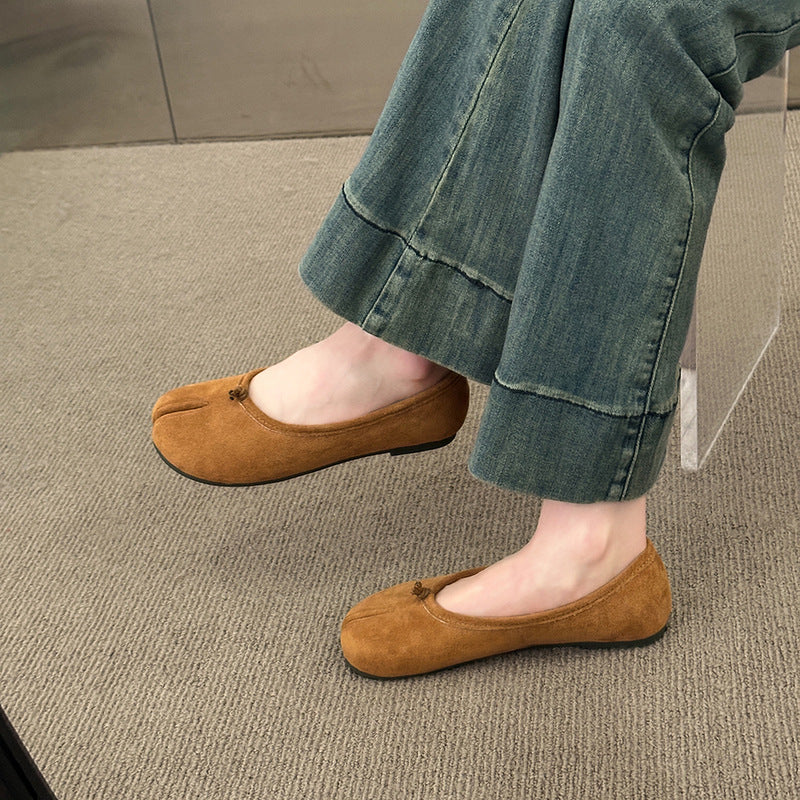Split-toe shoes trace their roots back to 15th-century Japan, where humble cotton tabi fundamentally transformed the way samurai, farmers, and artisans moved across rice paddies, tatami mats, and rugged terrain. By separating the hallux (big toe) from the other toes, tabi allowed wearers to grip slippery surfaces and maintain balance in dynamic environments. Early tabi were simple in construction—stitched from two pieces of fabric and fastened with small hooks at the ankle—but their ingenious design was immediately celebrated for its functional elegance.
For centuries, tabi remained a workman’s staple, but as Japan entered the Edo period, more ornate versions emerged. Silk-woven tabi adorned with indigo patterns became part of ceremonial kimono attire, symbolizing both status and craftsmanship. Fast-forward to the late 20th century, and avant-garde designers like Rei Kawakubo and Yohji Yamamoto challenged Western fashion norms by showcasing split-toe silhouettes on international runways. What had been purely functional footwear blossomed into a high-art statement—marrying tradition with progressive design.
As streetwear and athleisure trends gained momentum in the 2000s, sportswear innovators recognized the biomechanical benefits of toe separation. Running and minimalist brands began incorporating split-toe soles into performance shoes, touting improved ground feel, natural foot splay, and enhanced proprioception. Soon, split-toe designs appeared in everything from technical trail shoes to lifestyle sneakers, each iteration reflecting a balance between historical reverence and cutting-edge materials like engineered mesh, responsive foam midsoles, and water-resistant uppers.
Today, split-toe shoes are more than a novelty—they’re a bridge between past and present. Designers often reference traditional Japanese symbols, patterns, and construction techniques when crafting limited-edition releases, creating collectible pieces that celebrate heritage. Collaborations between global brands and Japanese ateliers spotlight artisanal hand-stitching and natural dye processes, encouraging consumers to appreciate the labor and history woven into every pair.
Understanding the lineage of split-toe footwear deepens the emotional connection between wearer and shoe. When you slip into a pair of modern split-toe sneakers, you’re not just donning a fashion statement—you’re participating in a narrative that spans centuries. This sense of continuity fosters respect for craftsmanship and helps you make purchasing decisions rooted in cultural awareness rather than passing trends.
To honor this heritage, seek out styles that subtly nod to classic tabi construction—features like asymmetrical lacing, leather overlays stitched in traditional patterns, or natural fiber linings. Pair these with contemporary wardrobe staples to create a fusion look that stands apart: imagine slim-fit denim cuffed just above your split-toe soles, or a tailored blazer draped over a simple tee and podiatrist-approved split-toe slip-ons.
The cultural journey of split-toe footwear—from humble tabi to runway muse—reveals an enduring respect for function, artistry, and innovation. By choosing well-crafted designs, you not only enjoy the performance benefits of toe separation but also carry forward a storied tradition. Experience this living heritage in every step—and discover why split-toe shoes remain as relevant today as they were half a millennium ago with Shoezea.


